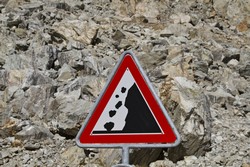New landslide consortium bears fruit
Landslide events can be predicted by understanding how interactions between small-scale geology and geography produce large-scale behaviour. To prevent these disasters, the EU needs a new generation of multidisciplinary researchers to conduct advanced computational and physical landslide modelling. The EU-funded HYDRODRIL (Integrated risk assessment of hydrologically-driven landslides) initiative worked to establish a multidisciplinary exchange programme of experts in geotechnical, geological, geophysical and geographical fields. The aim was to investigate the nature and risk of hydrologically driven landslides. HYDRODRIL established a network of researchers in Asia, central America and the EU. The program offered researcher exchanges, and a symposium and workshops were held in partner countries. The researchers studied past landslides in China's Three Gorges region. HYDRODRIL further conducted corresponding experiments on a small-scale model combined with multi-scale mathematical simulations. In the Three Gorges region, the researchers established an information system to monitor early warning signs and forecast the occurrence of landslides. HYDRODRIL developed several numerical models that yielded an integrated slope model that considers hydrogeological and mechanical effects. This work is expected to assist in understanding and forecasting the hydrological and geological mechanisms that trigger landslides. It could also help establish coherent EU-wide strategies for disaster prevention and mitigation.





